Warli paintings are typically created on mud walls using natural colors like white, made from rice paste, and depict scenes from daily life, nature, and animals. The artwork is characterized by simple, geometric shapes such as circles, triangles, and squares, often forming motifs like trees, animals, and human figures.
Indian Traditional Painting Styles: Top Paintings, History, Types, and Cultural Significance
After centuries of effort, Indian art has developed a rich legacy that includes a variety of traditional painting styles. As a result, one could argue that every style conveys a different tale that highlights the complex and diverse nature of India's heritage. Depending on whether one wants to teach design or get ready to take the Design Aptitude Tests (DAT) like the NID DAT and UCEED, this is very crucial to comprehend these traditional painting methods. This article looks at some of the best Indian traditional painting styles, the renowned painters and some of their beautiful paintings.
This Story also Contains
- 1. Madhubani Painting
- 2. Warli Painting
- 3. Pattachitra
- 4. Rajasthani Miniature Painting
- 5. Phad Painting
- 6. Kalamkari Painting
- 7. Tanjore Painting
- 8. Bengal Pattachitra
- 9. Mysore Painting
- 10. Cheriyal Scroll Painting
- 11. Bhil Painting
- 12. Gond Painting
- 13. Chittara Painting
- 14. Kerala Mural Painting
- 15. Pichwai Painting
- Cultural Significance of Indian Traditional Paintings
- Conclusion
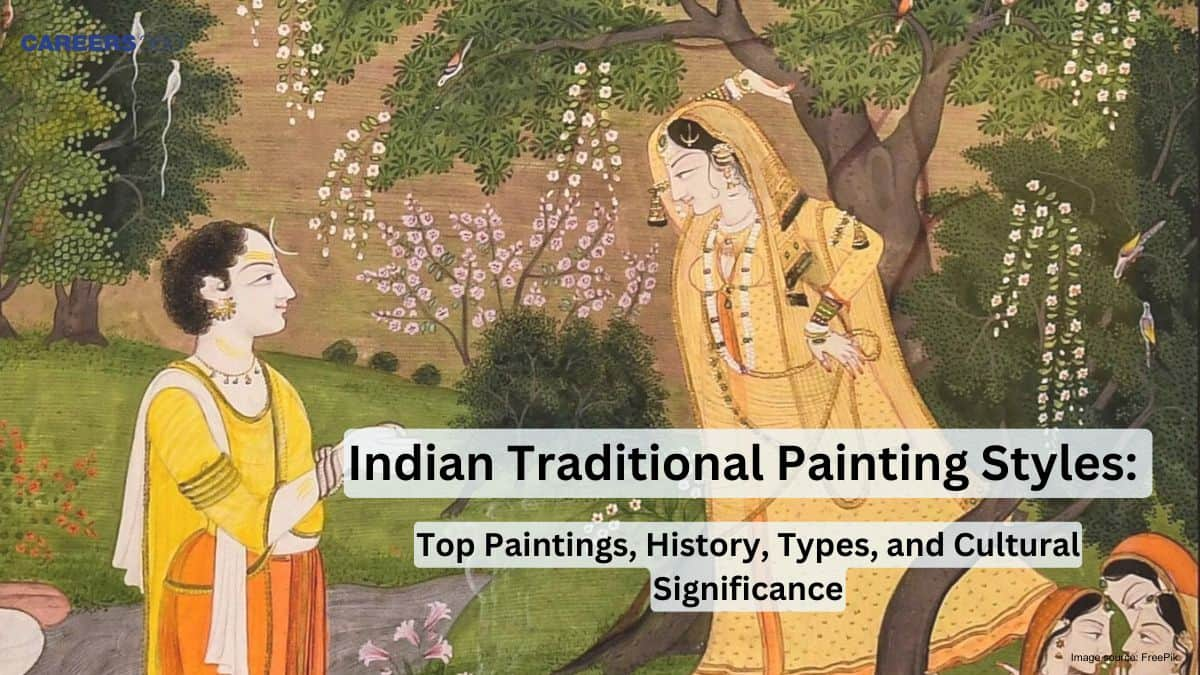
1. Madhubani Painting
This painting style is also called Mithila painting, its features involve elaborate ornament and the use of a wide range of bright colors.
Region of Origin: Bihar's Mithila region.
Unique Attributes: Done with brushing, finger, twig or match stick; subjects range from mythology, wildlife, and folklore; they use natural dye and pigment.
Important Painters and Paintings: One of the most popular painter of India, Sita Devi who specialized in depicting deeper aspects of Hindu mythology.
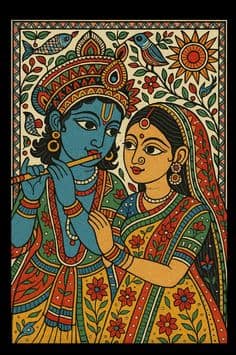
2. Warli Painting
Region of Origin: Warli tribes, Maharashtra
Unique Attributes: The basic color and monochromic patterns were made from white pigment on matt-looking backgrounds of mud, charcoal, and cow dung. This is a use of geometric shapes in portraying real-life situations such as farming, dances and rituals. Warli paintings are known for their minimalist yet expressive style, conveying a deep connection to nature and the community’s spiritual beliefs.
Important Paintings and Painters: Jivya Soma Mashe is a Warli painter, who gained appreciation from all over the world through his paintings, which speak in detail the essence of the Warli tribal community.
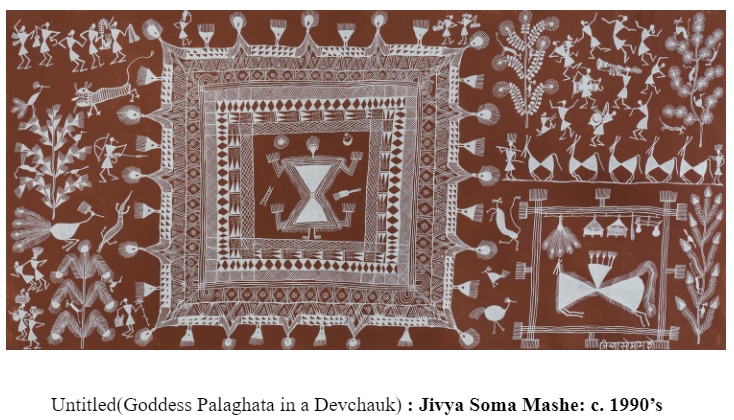
3. Pattachitra
Region of Origin: Odisha and West Bengal.
Unique Attributes: This antique form of pictorial artwork is intricate and highly representative and entails a depiction of legends and heroes often with large, bold strokes clearly and accurately rendered. made up of natural pigments on canvas or dried palm fibers.
Important Paintings and Painters: Art has been the key element in the progression of the art form and keeping it alive is the contribution made by Raghunath Mohapatra, one of the top 5 Indian painters.
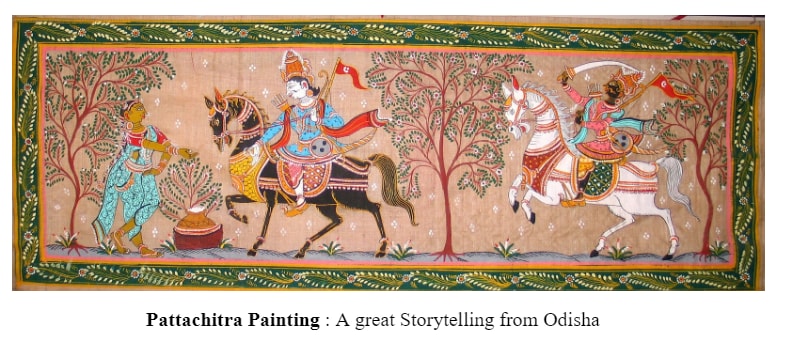
You may also check:
These are some of the topics that are generally also asked in DAT exams. Students can go through for their design entrance exam preparations and score high.
4. Rajasthani Miniature Painting
Rajasthani miniature paintings are a vibrant and intricate style of painting that originated in the royal courts of Rajasthan, India, during the 16th century. These paintings are characterized by detailed, delicate brushwork and the use of rich, vibrant colors.
Region of Origin: Rajasthan
Unique Attributes: These paintings are highly recognized for their smooth brushwork and brilliant use of colors; most of the paintings depict Hindu mythology, court scenes and portraits of royalties.
Important Paintings and Painters: A special focus can be made on the Kishangarh style which is characterized by dreamy images of Radha and Krishna painted by Nihal Chand using bright and detailed painting.
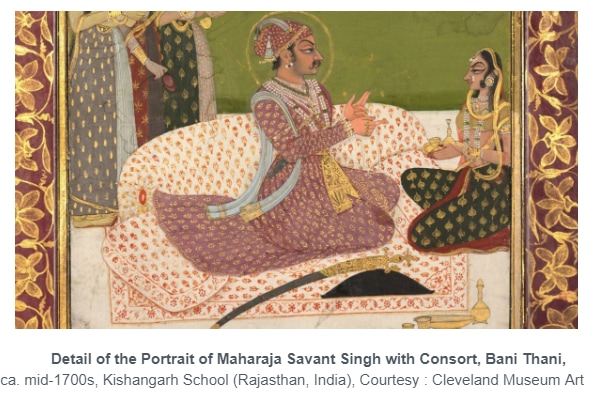
5. Phad Painting
Region of Origin: Rajasthan
Unique Attributes: Creation myths and stories of local gods and legends are depicted in large flat scroll paintings that are used as a medium for telling a story. that are filled with bright and powerful images and many elaborate storylines.
Important Paintings and Painters: Some of the sculptures created by one of the most famous phad artists Shree Lal Joshi have been quite instrumental towards the revival of these rather traditional Indian art styles.

6. Kalamkari Painting
Region of Origin: Andhra Pradesh.
Unique Attributes: The technique of artwork on fabric using body paints or wooden blocks to create aesthetical designs with natural colours. In most of the times they incorporate elaborate designs of plants and animals combined with Hindu epics.
Important Paintings and Painters: The leading artist is Kalamkari artist J. Niranjan who is known for designing the most detailed and bright patterns.
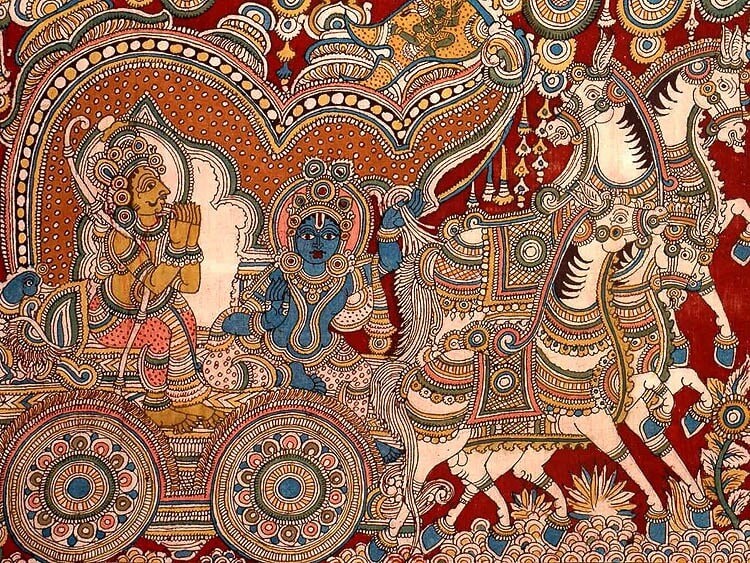
7. Tanjore Painting
Region of Origin: Tamil Nadu.
Unique Attributes: Often, gold foil is used to depict Hindu deities and their attributes in a very explicit manner, and these are highly praised for their rich colours, depth of surface patina and miniature construction.
Important Paintings and Painters: Rajam is a famous painter belonging to the Tanjore School and her paintings define the overpowering elaboration of the Tanjore style in its true sense.
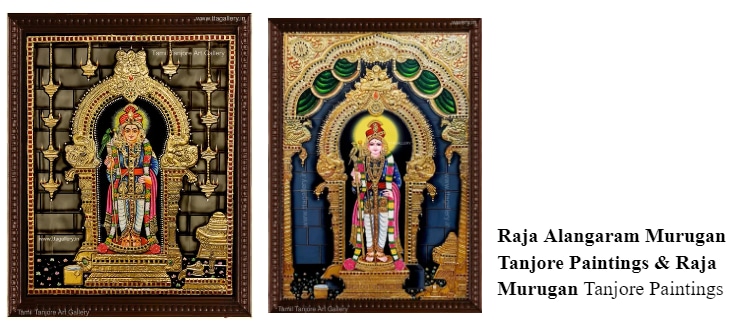
8. Bengal Pattachitra
Region of Origin: West Bengal.
Unique Attributes: There are one or two special features that characterize the method: It is also known as Kalighat painting It is characterized by a combination of black and red outlines with clear and bright colors used to develop themes concerning societal issues and cosmological rendering of mythology.
Important Paintings and Painters: A historian of art, Modernist painter Jamini Roy has taken portions of this style and incorporated these into his paintings.
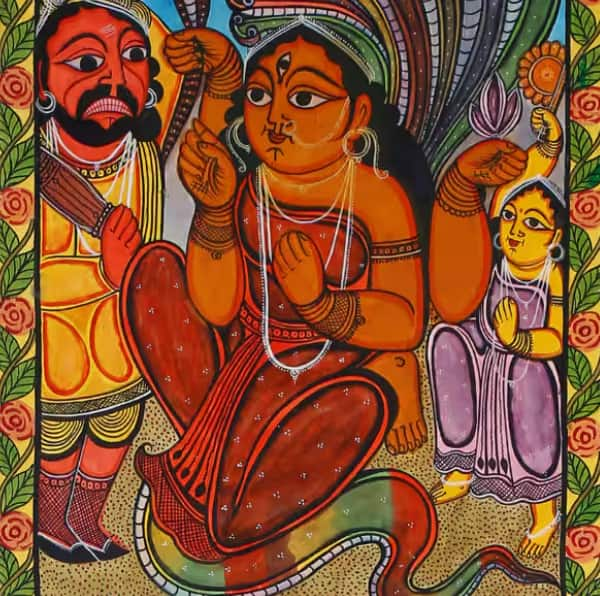
9. Mysore Painting
Region of Origin: Karnataka
Unique Attributes: This painting was done using a thin foil of gold and concentrates on certain spots and is very elegant and beautiful like the Tanjore paintings.
Important Paintings and Painters: Keshaviah is best known for painting the most beautiful gods and goddesses, epic scenes of battle and any other scene from the ‘purans’.
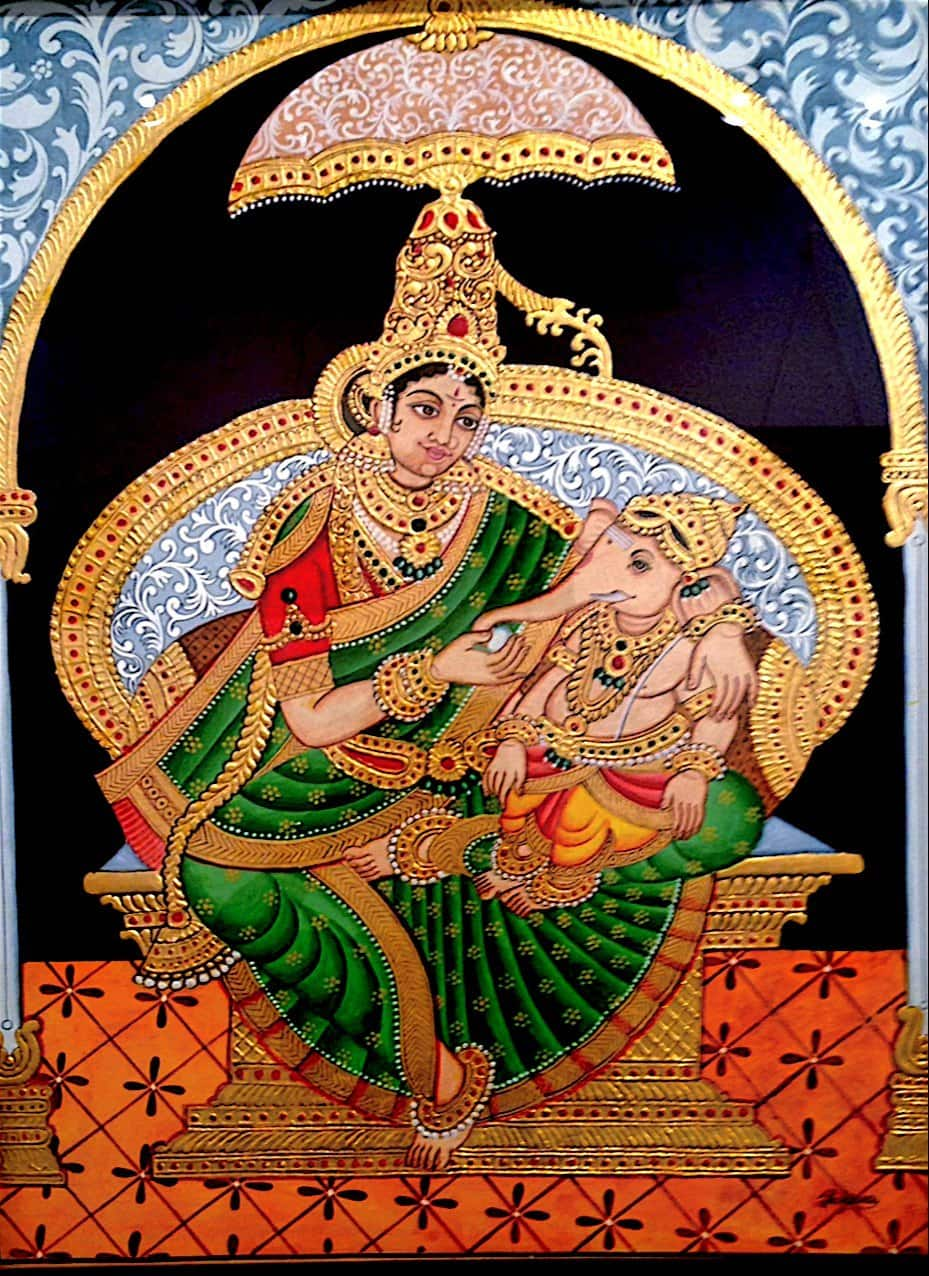
10. Cheriyal Scroll Painting
Region of Origin: Telangana
Unique Attributes: Non-Western, pictorial art form that employs bright colours and heavy lines and tells a story from epics, mythology, and folklore using long scrolls.
Important Paintings and Painters: For this, credit goes to D. Vaikuntam and his distinct and detailed paintings that breathed life into this art style and motivated it further.

11. Bhil Painting
Region of Origin: Bhil tribes in Madhya Pradesh, Gujarat, Maharashtra, and Rajasthan.
Unique Attributes: Depicts an image or a story in a frequent perspective of dots and lines, including tribal gods, nature, and ordinary vices.
Important Paintings and Painters: There is Bhuri Bai who is famous for her colourful elaborate paintings that portray and preserve the Bhil art.
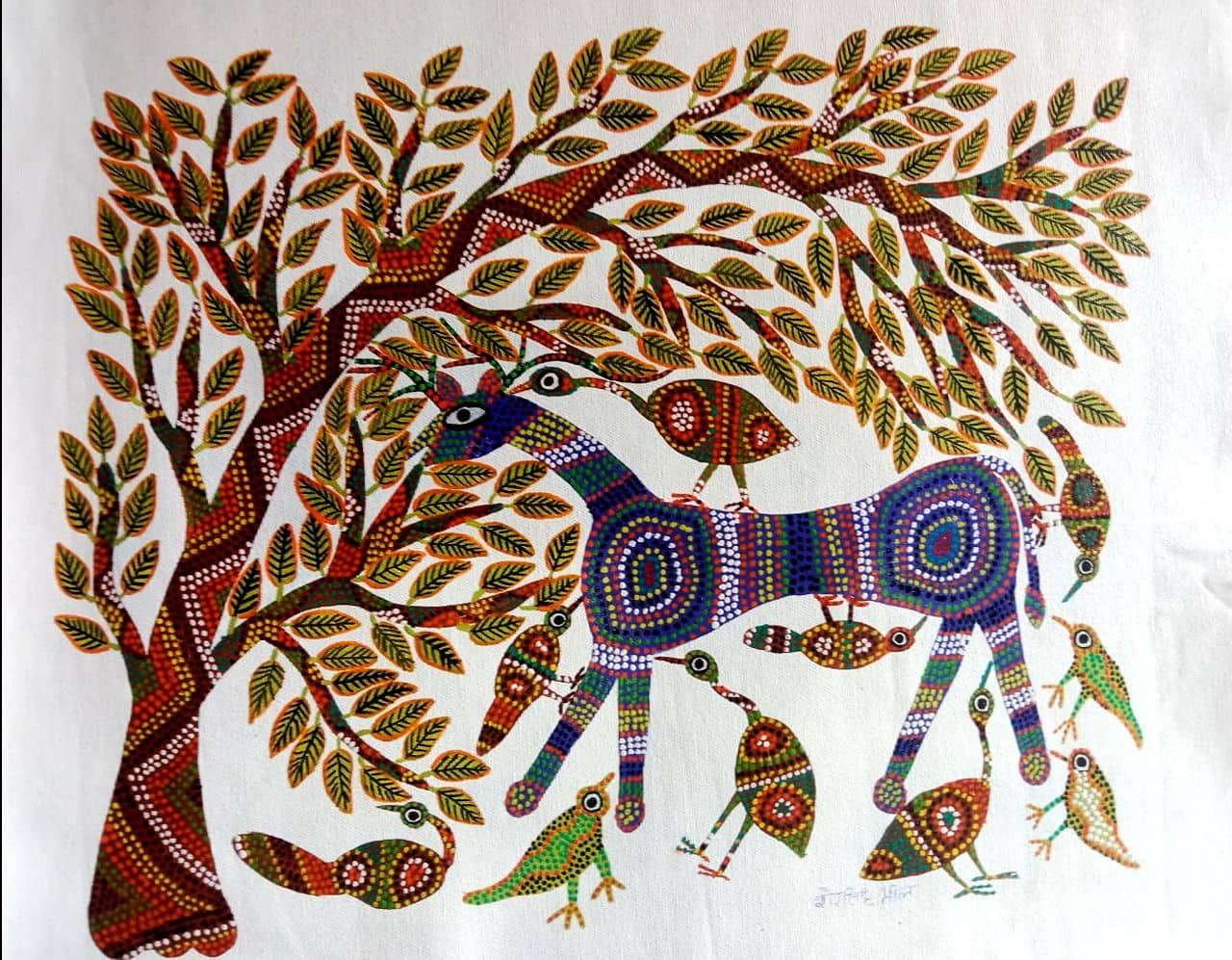
12. Gond Painting
Region of Origin: Madhya Pradesh.
Unique Attributes: Tribal art gond paints use bold colours and intricate designs in an almost minute depiction of objects in their day-to-day life alongside plants. Often incorporate lines and dots in order to work direction and more structure into your picture.
Important Paintings and Painters: Jangarh Singh Shyam can also be named one of the most famous Gond artists, whose works brought this type of art to the international level. In most of his paintings, he incorporates scenes from the life of the Gond people, their gods, and the environment.

13. Chittara Painting
Region of Origin: Karnataka.
Unique Attributes: The Chittara painting is well done by the Devaru community and is a form of painting where geometrical patterns are finely painted on naturally painted handmade paper. This is true because their artworks contain themes of daily life, fertility and even rituals/ ceremonies.
Important Paintings and Painters: Chittaras in the majority are painted by the women of the Devaru community. Leading painters such as Kamala Chinchure have significantly contributed to the preservation and furthering of this historical art genre.

14. Kerala Mural Painting
Region of Origin: Kerala
Unique Attributes: Kerala mural paintings are characterized by bright colours, and excellent workmanship and are traditionally religious in nature; They often depict Hindu gods and goddesses. These paintings are in ‘Ajanta and Dravidian styles’ It was painted on the walls of temples with natural colours.
Important Paintings and Painters: The two best examples of mural painting are located in Padmanabhapuram Palace and Mattancherry Palace. Mammiyoor Krishnan Kutty Nair is a reputed muralist, who has been the key person behind the revival of this somewhat outdated art form.
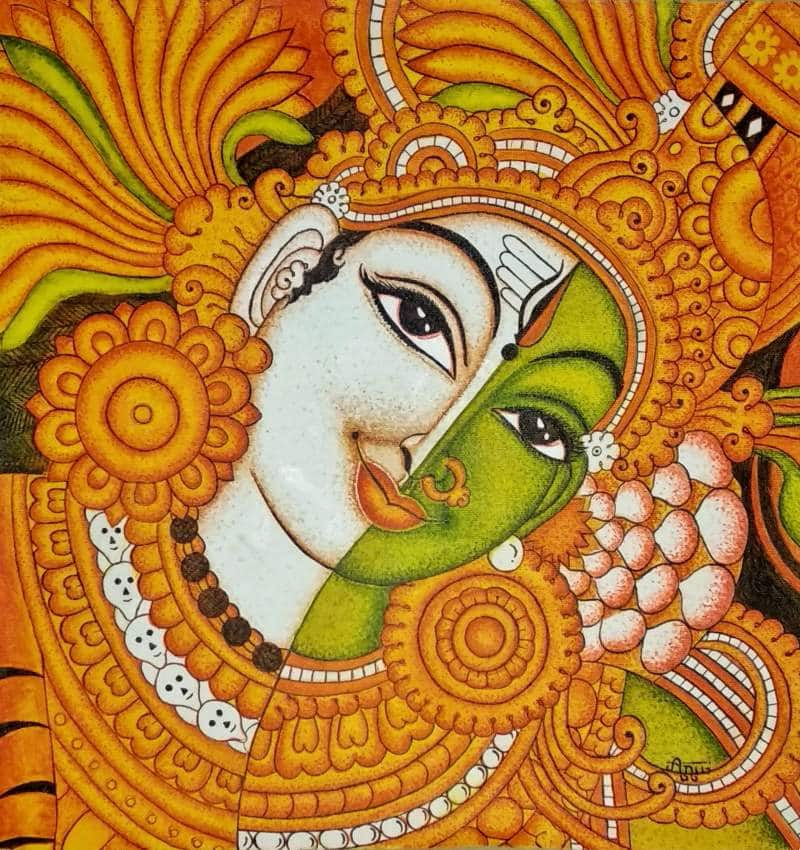
15. Pichwai Painting
Region of Origin: Rajasthan
Unique Attributes: Pichwai paintings are highly detailed and are painted to narrate stories about Lord Krishna especially from his childhood to his teenage stage. These paintings, often used as wall paintings in temples, are large, bright and detailed works of art.
Important Paintings and Painters: Pichwai painting is focused on Nathdwara, here more than a thousand artisans create very large fabric paintings. Bhupendra Sharma a Pichwai artist who specialises in painting of Lord Krishna is quite popular, and his work is characterised by bright colours and detailed images.
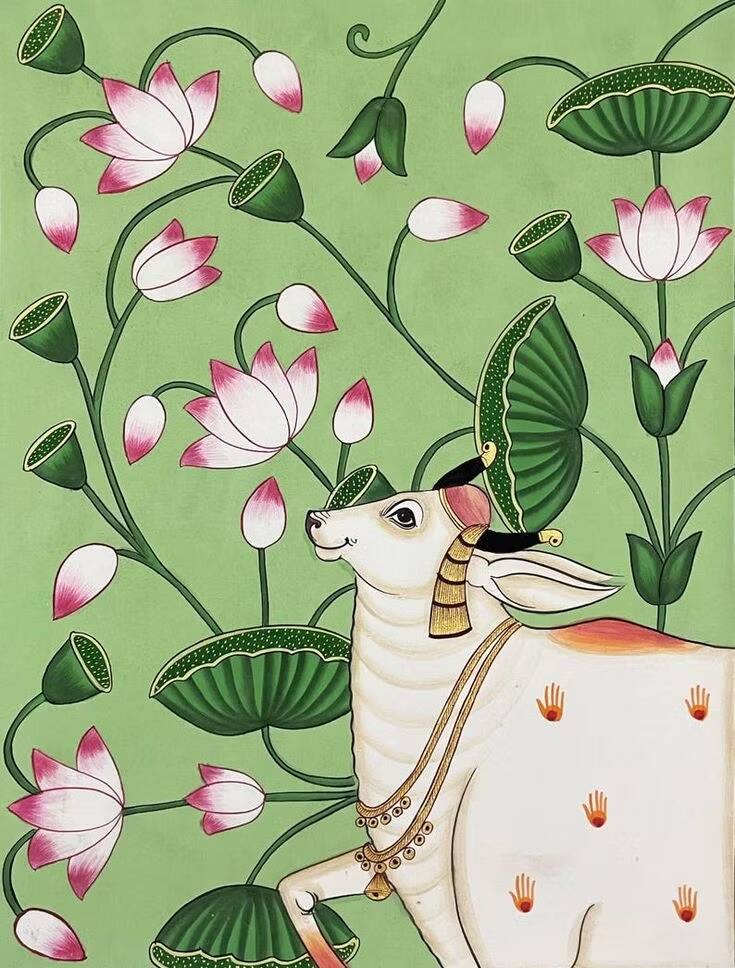
Cultural Significance of Indian Traditional Paintings
Indian traditional paintings serve as more than just art, they carry deep cultural and spiritual meanings including:
1. Connection to Religion and Mythology
Scenes from Hindu epics are shown in numerous paintings, such as Madhubani, Pattachitra, Tanjore, and Phad, which are used as a means of showcasing religious tales and upholding spiritual values.
2. Preservation of Tribal and Folk Traditions
Paintings like Warli, Gond, and Kalamkari originate from tribal communities and narrate stories of ancestors, daily life, and cultural practices.
3. Decorative and Ritualistic Importance
- Tanjore paintings are used as home altars.
- Madhubani paintings are traditionally drawn on walls during marriages and festivals.
- Pattachitra scrolls were historically used in temple storytelling traditions.
4. Contribution to India's Artistic Heritage
Indian traditional paintings have impacted international design trends, textiles, and modern art. ancient days, a lot of artists are resurrecting ancient art forms by fusing classic methods with modern subjects.
Conclusion
These traditional paintings give a peek view of the rich Indian culture and tradition of paintings. It is helpful for prospective designers to study these styles to understand the concept of colour, composition and narrative. Starting from the basic geometric patterns of Warli to the intricate and complex designs of Rajasthani Miniature paintings and the illustration of great Hindu epics in Pattachitra, these historic designs are still considered references in modern design. Learning and recognising these art forms increases the dimension of design vocabulary and also strengthens bonds towards the cultural heritage of India.
Frequently Asked Questions (FAQs)
Indian traditional paintings are rich in cultural and spiritual significance, often depicting religious stories, preserving tribal and folk traditions, and serving ritualistic purposes. They contribute to India's artistic heritage by influencing modern art and design, while continuing to evolve through the blending of classic techniques with contemporary themes.
Students can prepare for the Indian Traditional Paintings section by studying the key styles, their historical and cultural significance, and understanding the unique techniques used in each painting form. Try to remember important paintings and artists from each style for the exams.
The understanding of traditional Indian painting techniques teach you how to appreciate any colour scheme, composition, and, of course, storytelling. It also serves the purpose of educating people regarding these forms of art and to some extent, this means achieving cultural sensitivity that is crucial in design.
Madhubani painting style is also called Mithila painting as it is from Mithila region of Bihar. Its features involve elaborate ornament and the use of a wide range of bright colors.
Since it is impossible to tell which styles will be included in the design examinations, some of the most commonly covered forms include Madhubani, Warli, Pattachitra, Rajasthani miniatures and Phad paintings. These aesthetics provide a broad openness of methods and subjects, which displays a sound ground for design professionalism.